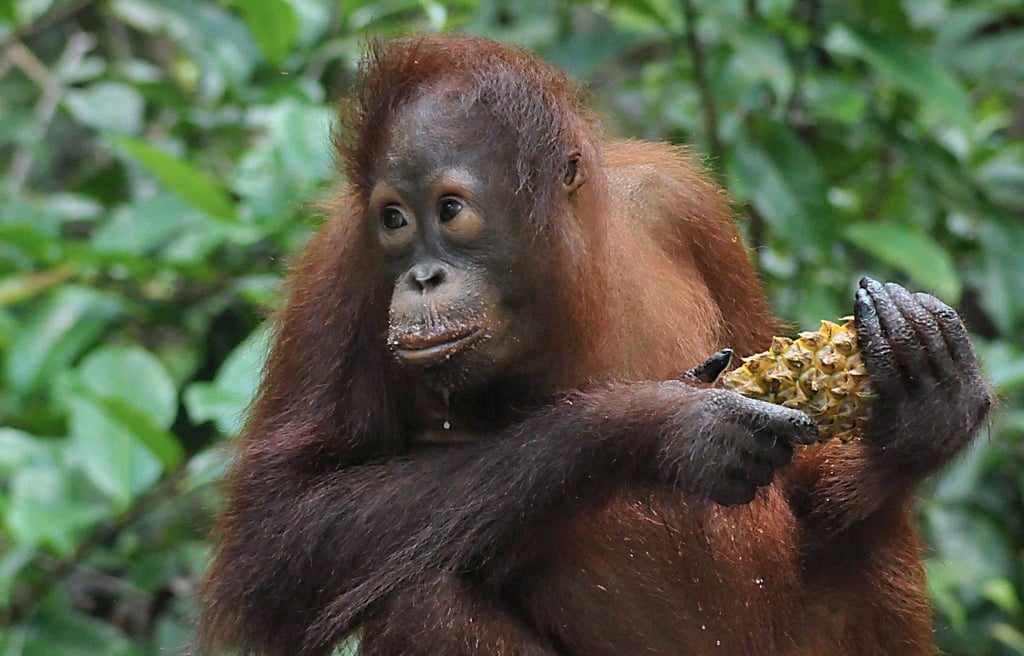Exploring the Social Dynamics of Orangutans: Insights into Their Unique Interactions and Behaviors
Orangutans are semi-solitary yet exhibit social behaviors, particularly in how adult males, females, and adolescents interact. Understanding their unique relationships, dietary habits, and avoidance of predators offers insight into their behavior, crucial for conservation efforts and enhancing ecotourism experiences.


The Social Structure of Orangutans: Understanding Interactions Among Adult Males, Females, and Adolescents
Orangutans are known for their semi-solitary nature, yet they exhibit some degree of social interaction. Among them, flanged adult male orangutans are the most solitary, primarily engaging in temporary sexual relationships with adult and adolescent females. Wild orangutan fathers do not take part in raising their offspring.
Adult females, when not receptive, typically stay close to their young, interact with other adult females and adolescents who are not necessarily their own, and generally steer clear of mature males. The bond between a mother and her young is long-lasting, while interactions with other orangutans tend to be brief.
Subadult males often associate with females, especially adolescents, but they are usually not aggressive toward other males. Adolescent females tend to travel in groups, particularly when they are close in age. This semi-solitary lifestyle may have developed due to their diet of ripe fruits, the scattered distribution of food, and the absence of large arboreal predators, as tigers in Sumatra are ground-dwellers.
Male Orangutan Competition and Behavior
Male-male competition for access to sexually receptive females is crucial in orangutan adaptation. Flanged adult males use their laryngeal sacs to produce a “long call,” a loud roar that can be heard up to a mile away. This call helps repel rivals and attract females. Adult male orangutans are generally intolerant of each other, and encounters between flanged males usually lead to aggression or avoidance. Fights often occur in the presence of a receptive female and can last from a few minutes to over an hour, sometimes causing severe injuries such as missing or stiff fingers, toes, scars, or even missing eyes. Unlike males, orangutan females rarely exhibit violent aggression and therefore do not sustain such injuries.
Orangutan Offspring Development and Male Bimaturism
Orangutan offspring can be carried by their mothers until they are 5 years old and breast-fed until the age of 8. Even after they are too old for carrying and breastfeeding, young orangutans often stay close to their mothers, traveling, eating, and resting in the same trees until around 10 years old. Once independent, they either remain alone or in the company of other immature orangutans. Female offspring frequently return to their mothers for visits until they are 15-16 years old. Studies suggest that Bornean orangutans may become independent earlier than Sumatran orangutans.
Such prolonged mother-offspring association is rare among mammals, with only humans having more intensive maternal relationships. This extended "childhood" allows young orangutans to learn essential survival skills from their mothers, including locating food, identifying edible items, using tools, and building sleeping nests. Mothers also protect their young from predators like clouded leopards and pythons in Borneo, and tigers in Sumatra.
Male orangutans exhibit a unique phenomenon called "bimaturism" or "arrested development," resulting in two types of mature males: flanged and unflanged. Flanged males have prominent cheek pads and a large throat sac, while unflanged males lack these traits and are smaller. Both types are sexually mature, but females prefer flanged males, leading unflanged males to sometimes engage in forceful copulation. Flanged males use loud "long calls" to attract females and deter other males. It is unclear when or why an unflanged male transforms into a flanged male, but the presence of a dominant flanged male may inhibit this development. The transformation likely occurs when the dominant male dies, moves away, or is defeated, allowing the unflanged male to develop his secondary sexual characteristics.
Humans are the only species with a more intensive mother-child relationship than orangutans. Primatologists suggest that orangutans have long "childhoods" because they need to learn numerous survival skills from their mothers before they can live independently.
The Arboreal World of Orangutans
Orangutans are the largest tree-dwelling animals on Earth. They spend most of their lives in trees, moving from branch to branch by climbing, clambering, and brachiating. Being diurnal, orangutans dedicate about 60% of daylight hours to foraging for food, with over 90% of their diet found in the canopy, making their arboreal lifestyle essential.
While primarily arboreal, Bornean males occasionally travel on the ground to move between tree stands. At Tanjung Puting National Park, adult males have been observed traveling over two miles on the ground in a single day. Females typically remain near their mothers' home ranges throughout their lives, whereas males often migrate far from their maternal home range.
Nest Building in Orangutans
Orangutans construct a new sleeping nest almost every night, typically between 15 to 100 feet high in trees using branches. They occasionally build mid-day nests for naps and sometimes reuse old nests, adding new branches as needed. This behavior is crucial to their arboreal lifestyle and survival in the wild.
Cognitive Abilities of Orangutans
Orangutans possess impressive cognitive abilities comparable to other great apes. This intelligence is evident in their tool use and ability to create simple tools in the wild. Some forms of tool use are unique to individuals, while others represent cultural traditions within orangutan populations.
Orangutans have been observed using tools for various purposes, including scratching, sheltering from rain and sun with leafy branches, and fishing for inaccessible branches or fruits. They also use tools for insect foraging, honey collection, and protection against stinging insects. In Sumatra, wild orangutans use tools to extract seeds from hard-shelled fruits. Notably, orangutans in captivity have even been taught to use stone handaxes.
Cultural Traditions
Until recently, many believed that culture was a uniquely human trait. However, scientists have found increasing evidence of socially learned traditions in other animal species. In 2003, a team of researchers, including Dr. Carel van Schaik and Dr. Biruté Mary Galdikas, identified two dozen behaviors present in some orangutan populations but absent in others. Published in the journal Science, their report suggests these behaviors are learned from other group members and passed down through generations.
For example, orangutans in Borneo use leaves as napkins to wipe their chins, while those in Sumatra use leaves as gloves to handle spiny fruits and branches, or as seat cushions in spiny trees.

